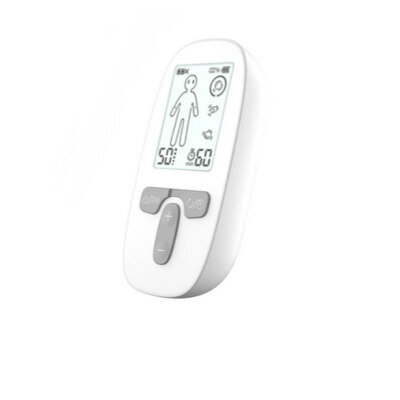AHA Updates Treatment Guidelines for Atrial Fibrillation
|
By HospiMedica International staff writers Posted on 04 Feb 2019 |

Image: New research shows NOACs are preferred over warfarin as an anticoagulant in AF (Photo courtesy of 123RF).
The American Heart Association (AHA; Dallas, TX, USA), American College of Cardiology (ACC; Washington, DC, USA), and the Heart Rhythm Society (HRS; Washington, DC, USA) now recommend the use of non-vitamin K oral anticoagulants (NOACs) over traditional warfarin to prevent stroke in people with atrial fibrillation (AF).
The recommendations are the result of a focused update to the 2014 AHA/ACC/HRS Guideline for the Management of Patients With Atrial Fibrillation. The new guideline also suggests that NOACs could even be used in people at a lower risk of stroke than previously thought, with emerging research suggesting the benefit of NOACs in stroke reduction risk outweighs the risk of taking them. The recommendation was simultaneously published on January 29, 2019, in Circulation, the Journal of the American College of Cardiology (JACC), and HeartRhythm.
“Patients with atrial fibrillation are at increased risk of stroke, which can be devastating. A goal of treating AF patients is to make blood less likely to form clots, which reduces the risk of stroke,” said Craig T. January, MD, PhD, co-chair of the updated guideline committee. “NOACs may be safer for patients because there is less risk of bleeding, and they may also be more effective at preventing blood clots than warfarin. AF patients should talk to their healthcare provider about any concerns they have about their prescribed medications and whether or not losing weight would benefit their health.”
Until the introduction of NOACs, warfarin had been one of the only treatment options for long-term anticoagulation of patients with AF, venous thromboembolism (VTE), or other conditions that require chronic anticoagulation. The major benefit of the NOAC anticoagulants is that they do not require strict and frequent laboratory monitoring, dosing adjustments, or dietary restrictions, and incur fewer drug interactions than warfarin. NOACs include dabigatran, rivaroxaban, apixaban, and edoxaban.
Related Links:
American Heart Association
American College of Cardiology
Heart Rhythm Society
The recommendations are the result of a focused update to the 2014 AHA/ACC/HRS Guideline for the Management of Patients With Atrial Fibrillation. The new guideline also suggests that NOACs could even be used in people at a lower risk of stroke than previously thought, with emerging research suggesting the benefit of NOACs in stroke reduction risk outweighs the risk of taking them. The recommendation was simultaneously published on January 29, 2019, in Circulation, the Journal of the American College of Cardiology (JACC), and HeartRhythm.
“Patients with atrial fibrillation are at increased risk of stroke, which can be devastating. A goal of treating AF patients is to make blood less likely to form clots, which reduces the risk of stroke,” said Craig T. January, MD, PhD, co-chair of the updated guideline committee. “NOACs may be safer for patients because there is less risk of bleeding, and they may also be more effective at preventing blood clots than warfarin. AF patients should talk to their healthcare provider about any concerns they have about their prescribed medications and whether or not losing weight would benefit their health.”
Until the introduction of NOACs, warfarin had been one of the only treatment options for long-term anticoagulation of patients with AF, venous thromboembolism (VTE), or other conditions that require chronic anticoagulation. The major benefit of the NOAC anticoagulants is that they do not require strict and frequent laboratory monitoring, dosing adjustments, or dietary restrictions, and incur fewer drug interactions than warfarin. NOACs include dabigatran, rivaroxaban, apixaban, and edoxaban.
Related Links:
American Heart Association
American College of Cardiology
Heart Rhythm Society
Latest Critical Care News
- Earlier Blood Transfusion Could Reduce Heart Failure and Arrhythmia in Heart Disease Patients
- 'Smart' Shirt Detects Epileptic Seizures in Real Time
- Skin Patch Measures Effectiveness of Flu/COVID Vaccines in 10 Minutes
- Complete Revascularization Reduces Risk of Death from Cardiovascular Causes
- Tiny Fish-Inspired Robots Navigate Through Body to Deliver Targeted Drug Therapy
- Coronary Artery Stenosis Could Protect Patients from Pulmonary Embolism Effects
- Sweat-Powered Sticker Turns Drinking Cup into Health Sensor
- Skin-Mounted 3D Microfluidic Device Analyzes Sweat for Real-Time Health Assessment
- New Therapeutic Brain Implants to Eliminate Need for Surgery
- Stem Cell Patch Gently Heals Damaged Hearts Without Open-Heart Surgery
- Biomaterial Vaccines to Make Implanted Orthopedic Devices Safer
- Deep Learning Model Predicts Sepsis Patients Likely to Benefit from Steroid Treatment
- Programmable Drug-Delivery Patch Promotes Healing and Regrowth After Heart Attack
- Breakthrough Ultrasound Technology Measures Blood Viscosity in Real Time
- Magnetically Activated Microscopic Robotic Swarms Could Deliver Medicine Inside Body
- Frequent ECG Use Can Identify Young People at Risk of Cardiac Arrest
Channels
Surgical Techniques
view channelAblation Reduces Stroke Risk Associated with Atrial Fibrillation
Atrial fibrillation (AFib) greatly increases the risk of stroke, blood clots, heart failure, and death, and millions of people in the U.S. are expected to be affected in the coming years.... Read more
Optical Tracking Method Identifies Target Areas in Robot-Assisted Neurosurgery
Epilepsy occurs when nerve cells misfire and produce uncontrolled electrical bursts in the brain, leading to seizures. While most patients respond to medication, about 30% require more advanced intervention.... Read morePatient Care
view channel
Revolutionary Automatic IV-Line Flushing Device to Enhance Infusion Care
More than 80% of in-hospital patients receive intravenous (IV) therapy. Every dose of IV medicine delivered in a small volume (<250 mL) infusion bag should be followed by subsequent flushing to ensure... Read more
VR Training Tool Combats Contamination of Portable Medical Equipment
Healthcare-associated infections (HAIs) impact one in every 31 patients, cause nearly 100,000 deaths each year, and cost USD 28.4 billion in direct medical expenses. Notably, up to 75% of these infections... Read more
Portable Biosensor Platform to Reduce Hospital-Acquired Infections
Approximately 4 million patients in the European Union acquire healthcare-associated infections (HAIs) or nosocomial infections each year, with around 37,000 deaths directly resulting from these infections,... Read moreFirst-Of-Its-Kind Portable Germicidal Light Technology Disinfects High-Touch Clinical Surfaces in Seconds
Reducing healthcare-acquired infections (HAIs) remains a pressing issue within global healthcare systems. In the United States alone, 1.7 million patients contract HAIs annually, leading to approximately... Read moreHealth IT
view channel
Printable Molecule-Selective Nanoparticles Enable Mass Production of Wearable Biosensors
The future of medicine is likely to focus on the personalization of healthcare—understanding exactly what an individual requires and delivering the appropriate combination of nutrients, metabolites, and... Read moreBusiness
view channel
Philips and Masimo Partner to Advance Patient Monitoring Measurement Technologies
Royal Philips (Amsterdam, Netherlands) and Masimo (Irvine, California, USA) have renewed their multi-year strategic collaboration, combining Philips’ expertise in patient monitoring with Masimo’s noninvasive... Read more
B. Braun Acquires Digital Microsurgery Company True Digital Surgery
The high-end microsurgery market in neurosurgery, spine, and ENT is undergoing a significant transformation. Traditional analog microscopes are giving way to digital exoscopes, which provide improved visualization,... Read more
CMEF 2025 to Promote Holistic and High-Quality Development of Medical and Health Industry
The 92nd China International Medical Equipment Fair (CMEF 2025) Autumn Exhibition is scheduled to be held from September 26 to 29 at the China Import and Export Fair Complex (Canton Fair Complex) in Guangzhou.... Read more














